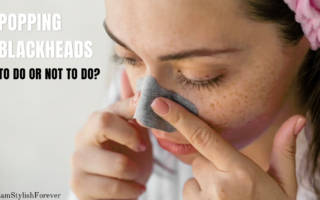Razor burn, that unwelcome fiery sensation after a shave, can turn a smooth moment into a stinging nightmare. From angry red bumps on your legs to irritated patches on your neck, it’s a battle many of us wage. But fear not! This ultimate guide equips you with the knowledge and tools to soothe the burn and achieve shaving serenity.
What is Razor Burn?
Simply put, razor burn is an inflammatory response caused by shaving. Dead skin cells, trapped hairs, and microscopic cuts team up to trigger irritation, resulting in redness, bumps, and that tell-tale burning sensation.
What Causes Razor Burn?
Several factors can lead to this shaving foe:
- Blunt Blades: A dull blade tugs and scrapes instead of slicing cleanly, increasing irritation.
- Dry Shaving: Shaving without lubrication leaves skin vulnerable to nicks and irritation.
- Harsh Products: Soaps and aftershaves with harsh chemicals can strip away natural oils and worsen dryness.
- Shaving Against the Grain: Going against hair growth increases the risk of trapped hairs and ingrown hairs, which can contribute to razor burn.
- Sensitive Skin: Some individuals have naturally more sensitive skin, making them prone to irritation.
Treating Razor Burn Effectively
Immediate Relief:
- Cool Compress: Apply a cool, damp washcloth to soothe the inflamed area. Repeat for 10-15 minutes, several times a day.
- Aloe Vera Gel: This natural powerhouse calms and hydrates, offering instant relief. Apply a thin layer of pure aloe vera gel to the affected area.
- Oatmeal Bath: Colloidal oatmeal has anti-inflammatory properties. Add a cup of colloidal oatmeal to warm bathwater and soak for 15-20 minutes. Gently pat dry afterward.
For Continued Healing:
- Over-the-counter Hydrocortisone Cream: Use a 1% hydrocortisone cream to reduce inflammation and redness. Follow the package instructions carefully.
- Witch Hazel: This natural astringent tightens pores and reduces redness. Dilute witch hazel with water and apply with a cotton pad. Don’t use on open wounds.
- Moisturize: Hydrate your skin with a fragrance-free, gentle moisturizer to promote healing and prevent future irritation. Look for ingredients like hyaluronic acid or ceramides.
Bonus Tip: Avoid tight clothing or fabrics that rub against the irritated area, as this can worsen symptoms.
How to Prevent Razor Burn
Exfoliate
Before shaving, gently exfoliate to remove dead skin cells and prevent trapped hairs. Use a gentle washcloth or a chemical exfoliant with lactic or glycolic acid.
Warm Up:
Take a warm shower or bath to soften hairs and open pores for a smoother shave.
Lather Up:
Use a shaving cream or gel formulated for sensitive skin to provide lubrication and minimize friction.
Choosing the right razor:
Invest in a high-quality razor with sharp blades and replace them regularly (every 5-7 shaves).
Direction of Shaving:
Shave in the direction of hair growth, even if it takes a little longer. This minimizes the risk of ingrown hairs and irritation.
Rinse & Pat Dry:
Rinse your skin with cool water and pat it dry gently with a soft towel.
Frequently Asked Questions:
Q: Does lotion help razor burn?
A: Yes, but choose a fragrance-free, gentle moisturizer suitable for sensitive skin. Avoid lotions with alcohol, which can sting and worsen irritation.
Q: Does sudocream help razor burn?
A: While the zinc oxide offers calming properties, Sudocream’s thick texture can trap heat and moisture, potentially worsening irritation. Only consider using it after consulting a doctor for specific guidance.
Q: Does ice help razor burn?
A: Yes, an ice pack wrapped in a thin cloth can reduce inflammation temporarily. Avoid direct contact with skin.
Q: Does aloe help razor burn?
A: Absolutely! Aloe vera gel is a natural and effective remedy for its calming and hydrating properties.
Q: Does Vaseline help razor burn?
A: Although Vaseline provides a barrier, it can trap bacteria and heat, potentially worsening irritation. Opt for a gentle, water-based moisturizer instead.
Q: Does Aquaphor help with razor burn?
A: Aquaphor, a petrolatum-based ointment, can be helpful for mild razor burn due to its moisturizing properties. However, test on a small area first as it may clog pores in some individuals.
Q. Does baby oil help with razor burn?
A: While some people advocate for using baby oil before shaving to provide lubrication and soothe the skin, it’s not actually recommended for treating razor burn. Here’s why:
- Clogging Pores: Baby oil is mainly mineral oil, which is non-comedogenic (meaning it doesn’t clog pores) but can still trap excess dirt and sweat on the skin, potentially further irritating already inflamed areas.
- Hydration Issues: While it feels moisturizing initially, baby oil doesn’t deeply hydrate the skin and can evaporate quickly, leaving you feeling dry and vulnerable to further irritation.
- Fragrance Concerns: Many baby oils contain fragrances, which can be particularly irritating to sensitive skin already experiencing razor burn.
Instead of baby oil, opt for:
- Shaving cream or gel formulated for sensitive skin: These provide proper lubrication and are less likely to irritate.
- Moisturizer after shaving: Choose a fragrance-free, gentle moisturizer to hydrate and soothe the skin.
- Aloe vera gel: This natural remedy has anti-inflammatory properties and can provide immediate relief.
Q. Does razor burn itch?
A: Razor burn can definitely cause itching. The inflammation and irritation associated with razor burn can trigger itchiness as part of the body’s healing response. Scratching, however, can further irritate the skin and worsen symptoms.
Here are some tips to manage the itch:
- Apply a cool compress: This can help soothe the inflamed skin and reduce itching.
- Use a moisturizer: Choose a fragrance-free, gentle moisturizer to keep the skin hydrated and less itchy.
- Try over-the-counter hydrocortisone cream: This can help reduce inflammation and itching, but always follow the instructions carefully.
- Avoid scratching: While tempting, scratching can worsen the irritation and potentially lead to scarring.
If the itching is severe or persistent, consult a doctor.
Q. Does razor burn spread?
A: Razor burn typically stays localized to the shaved area. However, if it’s not treated properly or you continue to shave with a dull blade or harsh products, it could potentially spread to nearby areas.
Here are some ways to prevent the spread of razor burn:
- Treat razor burn promptly: Don’t ignore symptoms, as early intervention can prevent it from spreading.
- Use sharp blades and proper shaving techniques: Dull blades and harsh techniques can worsen existing razor burn and increase the risk of spreading.
- Maintain good hygiene: Keep the shaved area clean and dry to prevent infection, which can worsen razor burn and even lead to its spread.
- Avoid touching the affected area: Touching can transfer bacteria and irritate the skin further, potentially contributing to the spread.
Q. Does razor burn leave scars?
A: In most cases, razor burn does not leave scars. It’s usually a temporary condition that heals completely with proper care. However, if the razor burn is severe, becomes infected, or is left untreated for too long, it’s possible to develop hyperpigmentation or even scarring.
To minimize the risk of scarring:
Treat razor burn promptly and adequately: The sooner you address it, the less likely it is to leave lasting marks.
Avoid scratching: Scratching can damage the skin and increase the risk of scarring.
Moisturize regularly: Keeping the skin hydrated promotes healing and can help prevent the formation of scars.
Consult a doctor if you notice hyperpigmentation or scarring: Early intervention from a dermatologist can increase the chances of successful treatment.
Q. Does razor burn cause bumps?
A: Razor burn can definitely cause bumps. These bumps can be:
- Razor bumps: These are small, inflamed bumps that occur when shaved hairs curl back and grow into the skin.
- Ingrown hairs: These are hairs that get trapped under the skin, causing irritation and bumps.
- Pustules: These are small, white-headed bumps that contain pus, usually indicating an infection.
If you experience bumps alongside razor burn, it’s important to treat them appropriately. See the tips mentioned above for preventing their spread and consider consulting a doctor if the bumps are severe or persistent.



